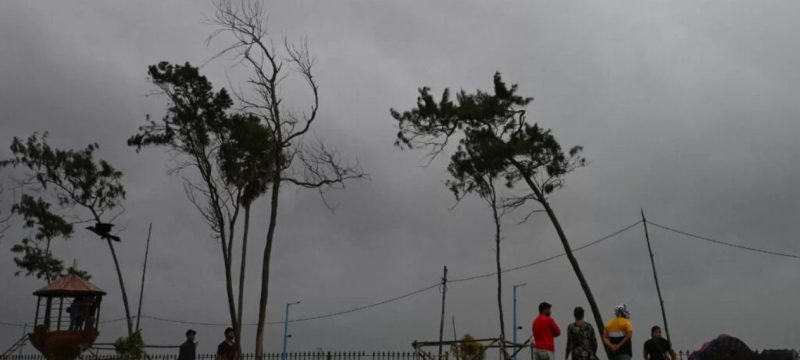Over 1.1 million people along India’s eastern coast sought shelter as Cyclone Dana approached, poised to strike the West Bengal and Odisha coasts as a “severe cyclonic storm” early Friday, according to India’s meteorological agency. The cyclone is expected to bring wind speeds up to 120 kilometers per hour, risking significant damage to coastal homes with thatched roofs.
In preparation, major airports, including Kolkata’s, were temporarily closed as heavy rains swept through the region. India’s navy positioned two ships with supplies and rescue teams near the projected landfall area close to Dhamra port, while disaster response teams patrolled, broadcasting evacuation orders.
Read more: Storm Approaches as Floods in the Philippines Claim 9 Lives and Leave Others Trapped on Roofs
Cyclone Dana is expected to impact nearby Bangladesh, where interim leader Muhammad Yunus announced extensive preparations, although no evacuation orders had been issued as the storm’s core is forecasted to affect India more directly. Crashing waves are anticipated to flood low-lying coastal areas, with water levels rising up to two meters above normal.
Odisha’s health minister, Mukesh Mahaling, confirmed nearly a million people were relocated to shelters, while West Bengal’s Bankim Chandra Hazra noted over 100,000 people had been moved. Authorities in the coastal resort of Puri ordered businesses to close and tourists to evacuate, with district magistrate Siddharth Swain stating that all measures were in place to protect lives.
Kolkata airport director Pravat Ranjan Beuria suspended flights overnight due to anticipated high winds and intense rain, with Bhubaneshwar airport implementing similar closures, while ferry services were halted, and numerous trains were canceled.
Bangladesh’s disaster minister, Faruk-e-Azam, stated that while evacuation wasn’t necessary, authorities remained on high alert. Cyclones are a recurring threat in the northern Indian Ocean, and scientists warn that these storms are intensifying due to climate change, as warmer ocean waters and increased atmospheric moisture fuel storm severity. Although storms like Cyclone Remal, which killed dozens in May, still cause fatalities, improved forecasting and efficient evacuation efforts have helped minimize loss of life.









